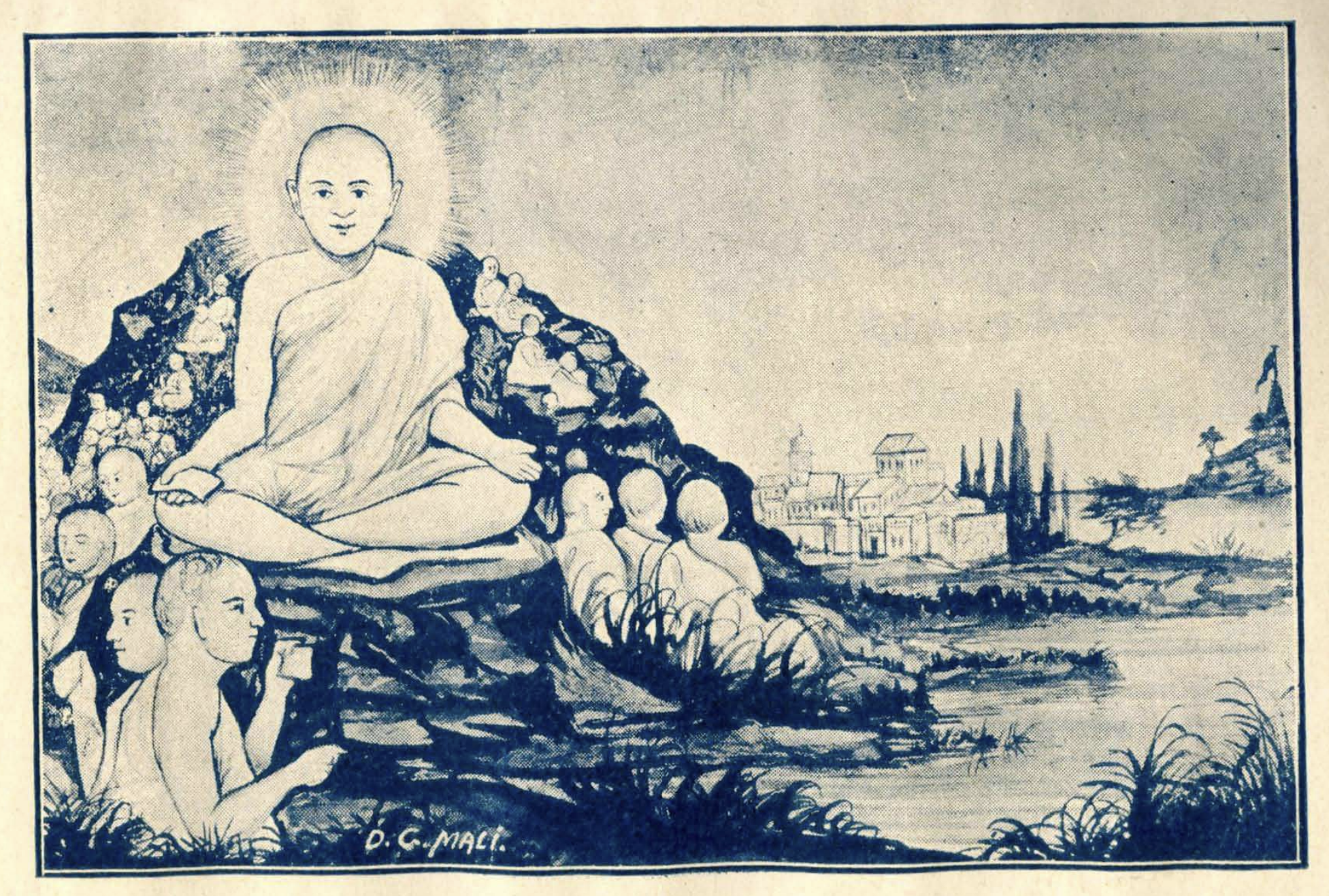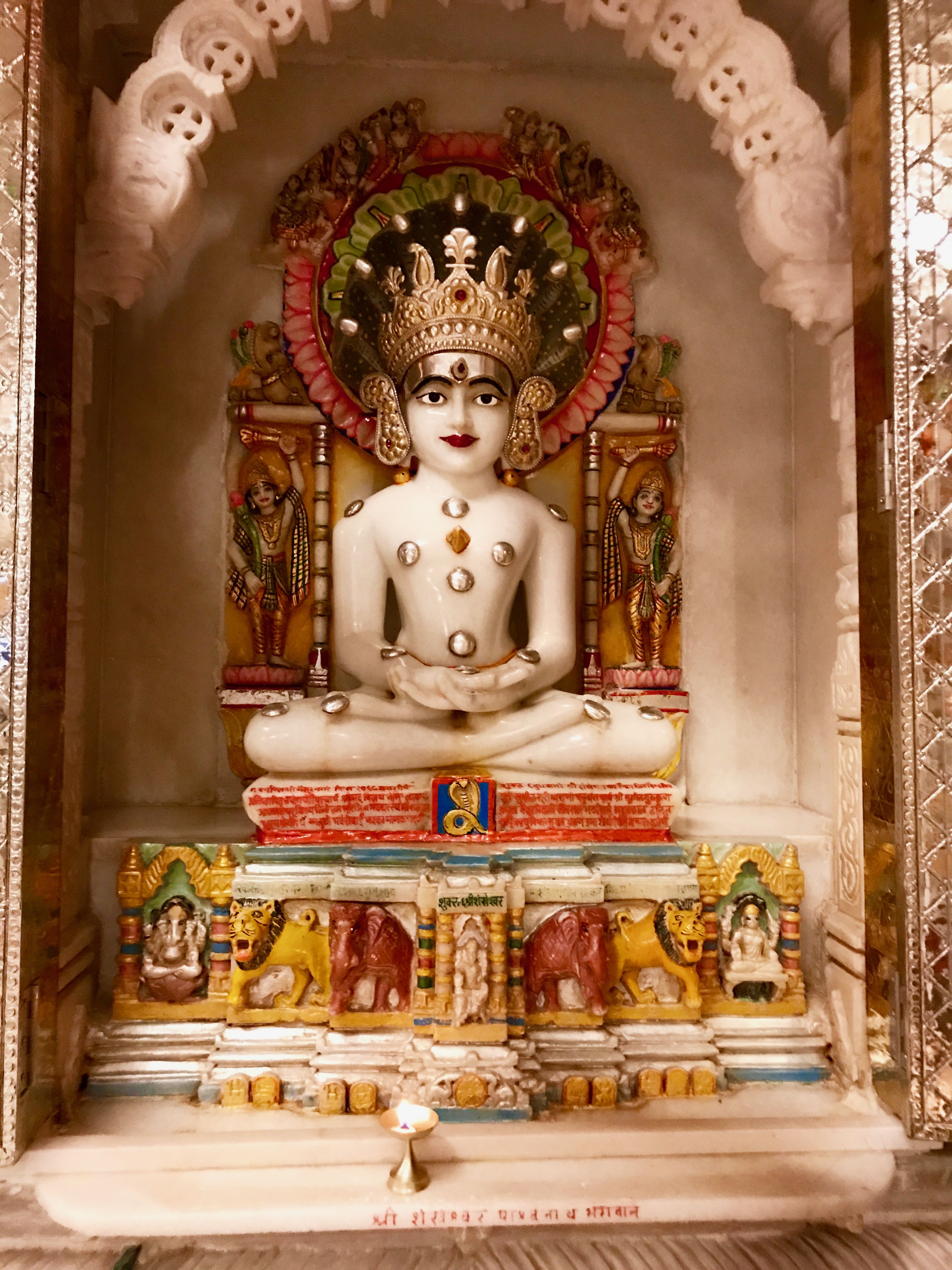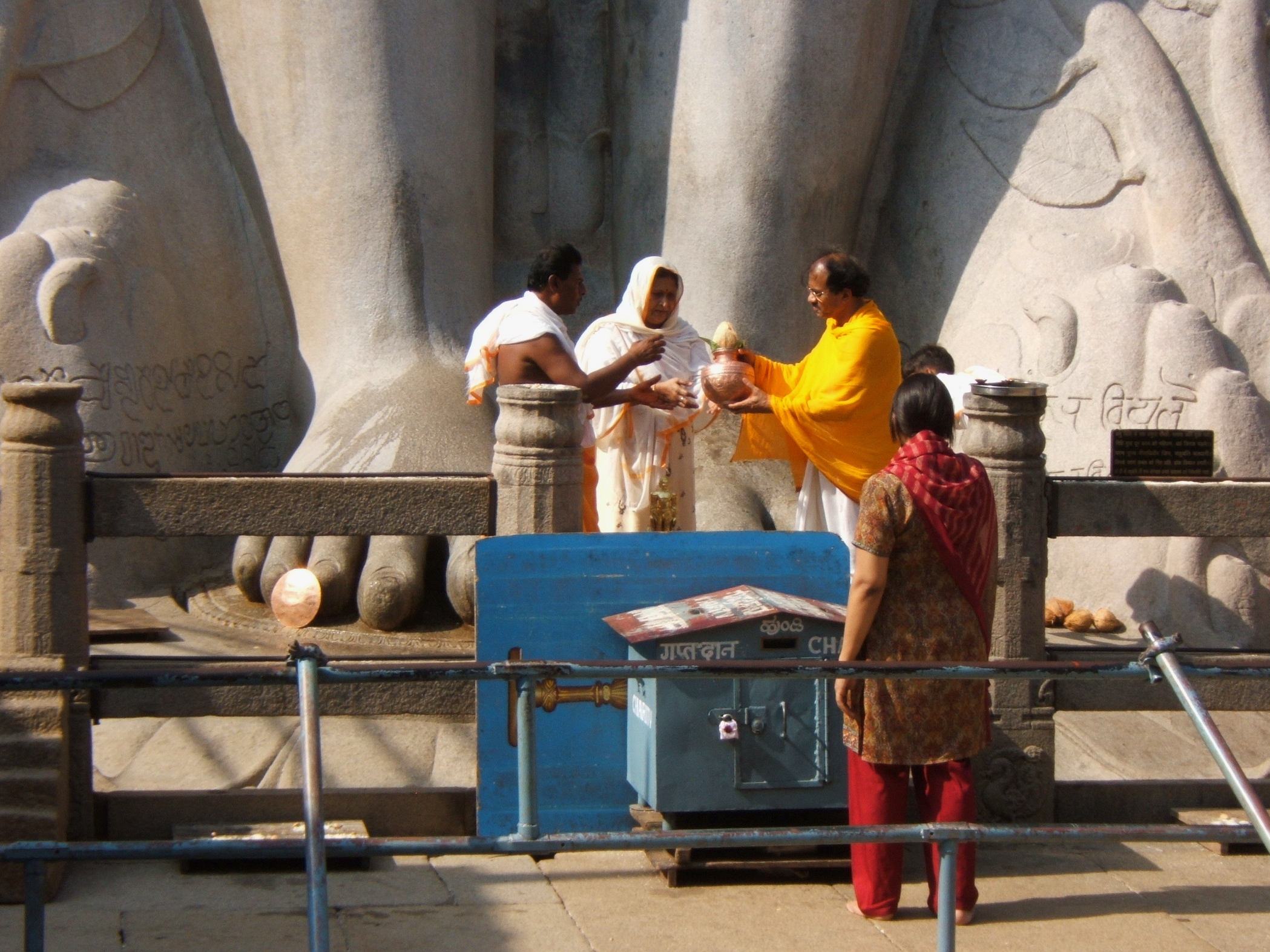|
Ratnaprabhasuri
Ratnaprabhasuri was a Śvetāmbara Jain ascetic and the 6th successor in the lineage of the monastic heads of the ''Chaturvidha Sangha's'' () Upkeśa Gaccha. He succeeded Swayamprabhasuri and is believed to have existed in 6th–5th century BC. He is most well-known as the founder of the Oswal, ''Oswāl'' clan of Śvetāmbara, Śvetāmbara Jains. Birth and initiation As per scriptures of the Śvetāmbara sect, he is believed to have been born in the 5th century BC in a royal family belonging to the Vidyadhara, ''Vidyādhara'' clan as ''Prince Ratnachuda''. Later on, he became a Vidyadhara, ''Vidyādhara'' king. As a member of the Vidyadhara, ''Vidyādhara'' clan, he is said to have possessed several ''vidyās'' (magical powers). Śvetāmbara scriptures have vivid descriptions of Vidyadhara, ''Vidyādhara'' kingdoms and legends about the magical powers possessed by the members of this clan. According to legends, Swayamprabhasuri was once preaching lay followers about renouncin ... [...More Info...] [...Related Items...] OR: [Wikipedia] [Google] [Baidu] |
Ratnaprabhasuri At Lunaadri Hill
Ratnaprabhasuri was a Śvetāmbara Jain ascetic and the 6th successor in the lineage of the monastic heads of the ''Chaturvidha Sangha's'' () Upkeśa Gaccha. He succeeded Swayamprabhasuri and is believed to have existed in 6th–5th century BC. He is most well-known as the founder of the ''Oswāl'' clan of Śvetāmbara Jains. Birth and initiation As per scriptures of the Śvetāmbara sect, he is believed to have been born in the 5th century BC in a royal family belonging to the ''Vidyādhara'' clan as ''Prince Ratnachuda''. Later on, he became a ''Vidyādhara'' king. As a member of the ''Vidyādhara'' clan, he is said to have possessed several ''vidyās'' (magical powers). Śvetāmbara scriptures have vivid descriptions of ''Vidyādhara'' kingdoms and legends about the magical powers possessed by the members of this clan. According to legends, Swayamprabhasuri was once preaching lay followers about renouncing and embracing monkhood, and ''King Ratnachuda'' was flying a ... [...More Info...] [...Related Items...] OR: [Wikipedia] [Google] [Baidu] |
Oswal
The Oswal (sometimes spelled Oshwal or Osval) are a Śvētāmbara, Śvetāmbara Jain merchant community with origins in Osian, Jodhpur, Osian, a town in the Marwar region of Rajasthan, India. According to research by James Tod, Colonel James Tod, Osavālas are purely of Rajput origins and they belong to not one, but several different Rajput tribes. The Osavālas origin legend has multiple aspects, all of which include a fierce, meat-eating goddess who becomes pacified by a Jain ascetic, involving the conversion of a king to Jainism. In modern times, there are barely any Osavālas living in Osiyān, but they still regard the Mahavira Jain temple, Osian, Mahavira temple and Sachiya Mata Temple as their "mother temples". They reside in Rajasthan, Malwa, Gujarat, and Kutch district, Kutch. They were formerly also found in the Tharparkar district of Sindh (Partition of India, pre-partition). Creation of the ''Oswāl clan'' Ratnaprabhasuri's penance near Upkeśapattan According to ... [...More Info...] [...Related Items...] OR: [Wikipedia] [Google] [Baidu] |
Upkeśa Gaccha
Upkeśa Gaccha is the oldest ''gaccha'' (monastic order) of Śvetāmbara Jainism. It is one of the 84 ''gacchas'' of the Śvetāmbara sect that were once in existence. Unlike most other ''gacchas'' that follow Mahavira's lineage and begin with his disciple Sudharmaswami, it follows the lineage of the 23rd Tirthankara Parshvanatha and is said to have begun with his prime disciple ''Ganadhara Shubhadatta''. It went extinct in about 1930 CE. History According to Śvetāmbara scriptures, lineage-wise, Upkeśa Gaccha is the oldest of all the 84 ''gacchas'' to ever exist. It is said to be of Parshvanatha's lineage. Historically, Parshvanatha's ''śāsana-kāl'' () was 250 years, which is the smallest difference between two Tirthankaras in this Avasarpiṇī. As a result, ascetics of Parshvanatha's unbroken lineage were around when Mahavira was born. As per Kalpa Sūtra, an important canonical scripture of the Śvetāmbaras, Mahavira's parents were Śrāvakas (lay-followers) o ... [...More Info...] [...Related Items...] OR: [Wikipedia] [Google] [Baidu] |
Osian, Jodhpur
Osian (also spelt Osiyan) is an ancient town located in the Jodhpur District of Rajasthan state in western India. It is an oasis in the Thar Desert. The town is a panchayat village and the headquarters for Osian tehsil. It lies by road north of the district headquarters at Jodhpur, on a diversion off the main Jodhpur – Bikaner Highway. The under-construction Amritsar Jamnagar Expressway passes through this town. Osian is famous as home to the cluster of ruined Hindu and Jain temples dating from the 8th to 12th century AD. The city was a major religious centre of the kingdom of Marwar during the Gurjara Pratihara dynasty. Of the 18 shrines in the group, the Surya Temple, Sachiya Mata Temple, Katan Bawari and the Jain temple dedicated to Mahavira stands out in their grace and architecture. The town was a major trading center at least as early as the Gupta period. It maintained this status, while also being a major center of Hinduism and Jainism for hundreds of year. T ... [...More Info...] [...Related Items...] OR: [Wikipedia] [Google] [Baidu] |
Swayamprabhasuri
Swayamprabhasuri or Svayamprabhasuri was a Śvetāmbara Jain ascetic and the 5th successor in the lineage of the monastic heads of the ''Chaturvidha Sangha's'' () Upkeśa Gaccha. He succeeded Keśiśramanācharya and is believed to have existed in 6th–5th century BC. He is known for establishing the '' Śrīmali'' and '' Porvāl'' clans. Birth and initiation Although not much is known about him, some non-canonical scriptures such as Ratnaprabhasuri's ''"Upkeśa Gaccha Caritra"'' () describe his ascetic life in detail and life before initiation into the ''Jain Sangha'' succinctly. As per scriptures of the Śvetāmbara sect, he is believed to have been born in the 6th century BC in a family belonging to the ''Vidyādhara'' clan. He is believed to have been initiated by Keśiśramanācharya, the 4th ''pattadhār'' () in the 23rd tirthankara Parshvanatha's lineage. Therefore, unlike most Jain ascetics today who trace their lineage to the 24th Tirthankara Mahavira, Swayam ... [...More Info...] [...Related Items...] OR: [Wikipedia] [Google] [Baidu] |
Kesi (Ganadhara)
Kesi was the leader of the order of monks of the twenty third Jain Tirthankara, Parshvanatha, who is said to have met the 'Gandhara' (Chief disciple) of the twenty fourth Jain Tirthankara, Mahavira, Indrabhuti Gautama, Gautama. He was the disciple of Arya Samudradatta. His monastic lineage later came to be known as the Upkeśa Gaccha. Monastic lineage The time period between Parshvanatha and Mahavira was only 250 years, which is relatively short when compared to the periods between any two consecutive Tirthankara, tirthankaras. According to ancient Śvetāmbara texts such as Uttaradhyayana, Uttaradhyayana Sutra, owing to this short period of time between both the Tirthankara, tirthankaras, monks of Parshvanatha's lineage existed during Mahavira's time period. Keśiśramanācharya was a monk of Parshvanatha's lineage, who is said to have met Gautama Swami, the prime disciple of Mahavira. Parshvanatha's monastic lineage is said to have begun with his prime disciple Arya Śubhada ... [...More Info...] [...Related Items...] OR: [Wikipedia] [Google] [Baidu] |
Śvetāmbara
The Śvetāmbara (; also spelled Shwetambara, Shvetambara, Svetambara or Swetambara) is one of the two main branches of Jainism, the other being the Digambara. ''Śvetāmbara'' in Sanskrit means "white-clad", and refers to its ascetics' practice of wearing white clothes, which sets it apart from the ''Digambara'' or "sky-clad" Jains whose ascetic practitioners go nude. Śvetāmbaras do not believe that ascetics must practice nudity. The Śvetāmbara and Digambara traditions have had historical differences ranging from their dress code, their temples and iconography, attitude towards Jain nuns, their legends and the texts they consider as important. Śvetāmbara Jain communities are currently found mainly in Gujarat, Rajasthan and coastal regions of Maharashtra. According to Jeffery D. Long, a scholar of Hindu and Jain studies, about four-fifths of all Jains in India are Śvetāmbaras. History and lineage Śvetāmbaras consider themselves to be the original followers of Maha ... [...More Info...] [...Related Items...] OR: [Wikipedia] [Google] [Baidu] |
Jainism
Jainism ( ), also known as Jain Dharma, is an Indian religions, Indian religion whose three main pillars are nonviolence (), asceticism (), and a rejection of all simplistic and one-sided views of truth and reality (). Jainism traces its spiritual ideas and history through the succession of twenty-four , supreme preachers of ''dharma''. The first in the current time cycle is Rishabhadeva, who tradition holds lived millions of years ago; the 23rd is Parshvanatha, traditionally dated to the 9th century Common Era, BCE; and the 24th is Mahāvīra, Mahavira, who lived . Jainism is considered an eternal ''dharma'' with the guiding every time cycle of the Jain cosmology, cosmology. Central to understanding Jain philosophy is the concept of ''bhedavijñāna'', or the clear distinction in the nature of the soul and non-soul entities. This principle underscores the innate purity and potential for liberation within every Jīva (Jainism), soul, distinct from the physical and menta ... [...More Info...] [...Related Items...] OR: [Wikipedia] [Google] [Baidu] |
Bhinmal
Bhinmal (previously Shrimal Nagar) is an ancient town in the Jalore District of Rajasthan, India. It is south of Jalore. Bhinmal was the early capital of Gurjaradesa, comprising modern-day southern Rajasthan and northern Gujarat. The town was the birthplace of the Sanskrit poet Magha and mathematician-astronomer Brahmagupta. History The original name of Bhinmal was Bhillamala. Its older name was Srimal, from which Shrimali Brahmins took their name. Xuanzang, the Chinese Buddhist pilgrim who visited India between 631 and 645 AD during Harsha's reign, mentioned this place as ''Pi-lo-mo-lo''. There are different views about the origin of its name. It is suggested that it may from its Bhil population, whereas Shrimalamahatmaya said the name arose because of the poverty caused by Islamic invaders, which caused most of its people to migrate from the area. It was the early capital of the kingdom of Gurjaradesa. The kingdom is first mentioned in Banabhatta's ''Harshacharita'' in ... [...More Info...] [...Related Items...] OR: [Wikipedia] [Google] [Baidu] |
Śrāvaka (Jainism)
In Jainism, the word Śrāvaka or Sāvaga (from Jain Prakrit) is used to refer to the Jain laity (householders). The word ''śrāvaka'' has its roots in the word ''śrāvana'', i.e. ''the one who listens'' (to the discourses of the saints). The ''tirthankara'' restores or organises the '' sangha'', a fourfold order of ''muni'' (male monastics), '' aryika'' (female monastics), '' śrāvaka''s (male followers) and ''śrāvikā''s (female followers). In Jainism, there are two kinds of votaries: *The householder (one with minor vows) *The homeless ascetic (one with major vows). According to the Jain text '' Puruşārthasiddhyupāya'': Ratnakaranda śrāvakācāra, a major Jain text, discusses the conduct of a Śrāvaka in detail. Six essentials In Jainism, six essential duties (''avashyakas'') are prescribed for a ''śrāvaka''. These help the laity in achieving the principle of ahimsa which is necessary for his/her spiritual upliftment. The six duties are: #Worship of ... [...More Info...] [...Related Items...] OR: [Wikipedia] [Google] [Baidu] |
Shaivism
Shaivism (, , ) is one of the major Hindu denominations, Hindu traditions, which worships Shiva as the Para Brahman, supreme being. It is the Hinduism#Demographics, second-largest Hindu sect after Vaishnavism, constituting about 385 million Hindus, found widely across South Asia (predominantly in South India, Southern India), Sri Lanka, and Nepal.Keay, p.xxvii. The followers of Shaivism are called Shaivas or Shaivites. According to Chakravarti, Shaivism developed as an amalgam of pre-Aryan religions and traditions, Vedic Rudra, and post-Vedic traditions, accommodating local traditions and Yoga, puja and bhakti. According to Bisschop, early shaivism is rooted in the worship of vedic deity Rudra. The earliest evidence for sectarian Rudra-Shiva worship appears with the Pasupata (early CE), possibly owing to the Origins of Hinduism, Hindu synthesis, when many local traditions were aligned with the Brahmanism, Vedic-Brahmanical fold. The Pāśupata movement rapidly expanded through ... [...More Info...] [...Related Items...] OR: [Wikipedia] [Google] [Baidu] |
Jodhpur
Jodhpur () is the second-largest city of the north-western Indian state of Rajasthan, after its capital Jaipur. As of 2023, the city has a population of 1.83 million. It serves as the administrative headquarters of the Jodhpur district and Jodhpur division. It is the historic capital of the Kingdom of Marwar, founded in 1459 by Rao Jodha, a Rajput chief of the Rathore clan. On 11 August 1947, 4 days prior to the Indian independence, Maharaja Hanwant Singh the last ruler of Jodhpur state signed the Instrument of Accession and merged his state in Union of India. On 30 March 1949, it became part of the newly formed state of Rajasthan, which was created after merging the states of the erstwhile Rajputana. Jodhpur is a famous tourist spot with a palace, fort, and temples, set in the stark landscape of the Thar Desert. It is also known as the 'Blue City' due to the dominant color scheme of its buildings in the old town. The old city circles the Mehrangarh Fort and is bou ... [...More Info...] [...Related Items...] OR: [Wikipedia] [Google] [Baidu] |








